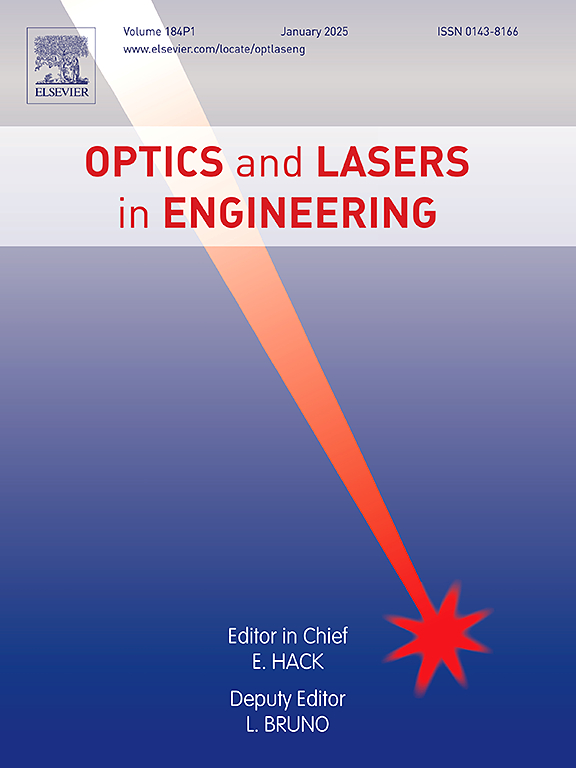基于局部图像自相似度的不同源地理空间图像多阶段匹配
IF 3.5
2区 工程技术
Q2 OPTICS
引用次数: 0
摘要
多源地理空间图像的组合使用对于许多应用至关重要,包括图像配准和三维重建。然而,不同来源的地理空间图像往往存在复杂的几何变换和非线性辐射畸变,极大地增加了有效匹配的难度。为了解决这个问题,我们引入了一种鲁棒的多模态地理空间数据匹配方法,通过整合显著图像特征和密集模板来提高匹配精度。我们的方法首先使用局部自相似(LSS)模型从每个像素提取局部结构信息。然后构造一个旋转不变特征描述子,结合尺度空间进行粗匹配和几何不变性。然后对感测图像进行重新采样,并对参考图像和采样后的感测图像进行特征匹配。最后,设计了密集图像模板,并利用特征匹配结果对匹配精度进行了优化。在各种类型的多模态地理空间图像(包括光学,红外,合成孔径雷达和数字地图)上进行的实验结果表明,我们的方法通过实现更高的正确匹配计数,提高精度和召回率以及更低的均方根误差,超越了多种最先进的匹配技术。这些发现验证了我们的方法在实现跨不同多源地理空间数据集的鲁棒性和准确性匹配方面的有效性。本文章由计算机程序翻译,如有差异,请以英文原文为准。
Multi-stage matching for different sources of geospatial images based on local image self-similarity
The combined use of multi-source geospatial imagery is crucial for many applications, including image registration and three-dimensional reconstruction. However, complex geometric transformation and nonlinear radiation distortion are always present in different sources of geospatial images, significantly increasing the difficulty of effective matching. To address this, we introduce a robust method for matching multimodal geospatial data by integrating salient image features and dense templates to enhance matching accuracy. Our method begins by extracting local structural information from each pixel using the local self-similarity (LSS) model. We then construct a rotation-invariant feature descriptor that is combined with scale space for coarse matching with geometric invariance. After that, we resample the sense image and conduct feature matching on the reference image and the sampled sense image. Finally, a dense image template is designed and the matching accuracy is refined using the results obtained from feature matching. Experimental results conducted on various types of multimodal geospatial images, including optical, infrared, synthetic-aperture radar, and digital maps, demonstrate that our method surpasses multiple state-of-the-art matching techniques by achieving higher correct match counts, improved precision and recall, and lower root mean square error. These findings validate the effectiveness of our approach in achieving robust and accurate matching across diverse multi-source geospatial datasets.
求助全文
通过发布文献求助,成功后即可免费获取论文全文。
去求助
来源期刊

Optics and Lasers in Engineering
工程技术-光学
CiteScore
8.90
自引率
8.70%
发文量
384
审稿时长
42 days
期刊介绍:
Optics and Lasers in Engineering aims at providing an international forum for the interchange of information on the development of optical techniques and laser technology in engineering. Emphasis is placed on contributions targeted at the practical use of methods and devices, the development and enhancement of solutions and new theoretical concepts for experimental methods.
Optics and Lasers in Engineering reflects the main areas in which optical methods are being used and developed for an engineering environment. Manuscripts should offer clear evidence of novelty and significance. Papers focusing on parameter optimization or computational issues are not suitable. Similarly, papers focussed on an application rather than the optical method fall outside the journal''s scope. The scope of the journal is defined to include the following:
-Optical Metrology-
Optical Methods for 3D visualization and virtual engineering-
Optical Techniques for Microsystems-
Imaging, Microscopy and Adaptive Optics-
Computational Imaging-
Laser methods in manufacturing-
Integrated optical and photonic sensors-
Optics and Photonics in Life Science-
Hyperspectral and spectroscopic methods-
Infrared and Terahertz techniques
 求助内容:
求助内容: 应助结果提醒方式:
应助结果提醒方式:


